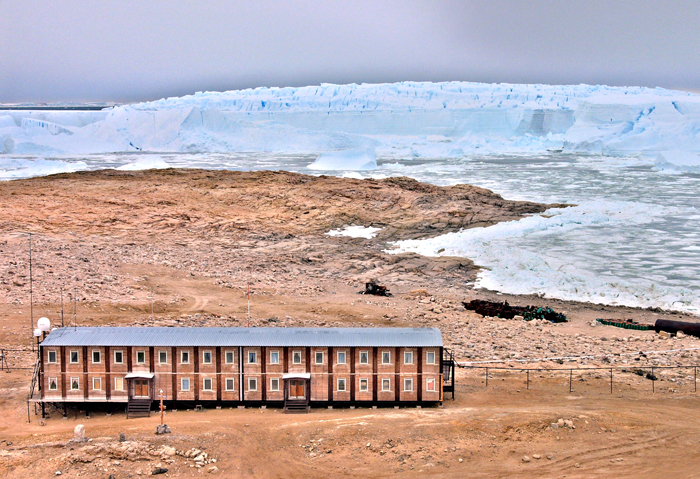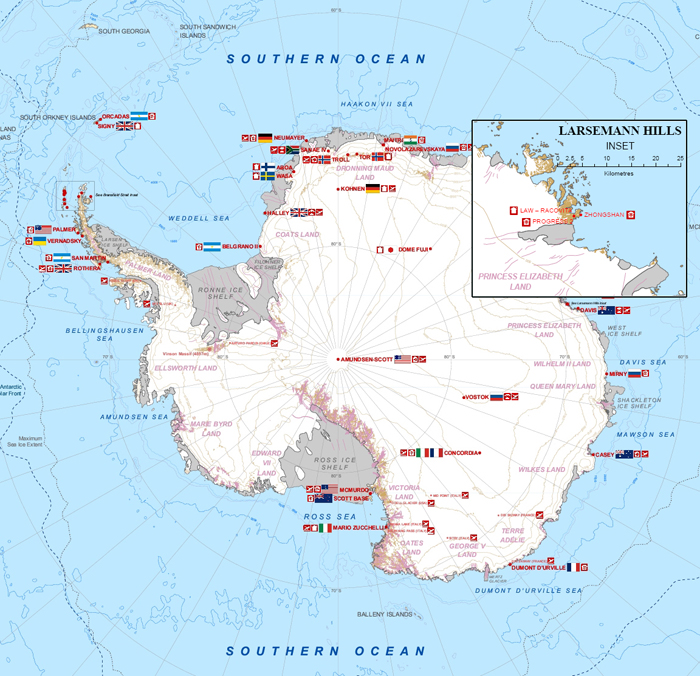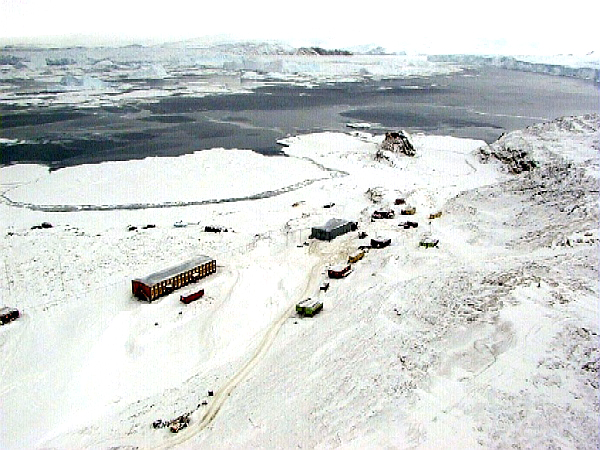|
Fire at Russian stationBlaze claims one life, points to need for safety vigilance in AntarcticaPosted October 17, 2008
A fire claimed one life, injured two people, and destroyed a two-story building at the Russian Antarctic Expedition (RAE) research station Progress “The station team was not able to cope with the fire by their own efforts and the building was completely destroyed by fire,” said Valery Lukin, head of RAE, in an e-mail to the Council of Managers of Antarctic Programs (COMNAP) Karl A. Erb, director of the National Science Foundation’s Office of Polar Programs George Blaisdell, USAP Operations manager, said the incident is a reminder that accidents can have serious consequences in the challenging Antarctic environment. He urged USAP participants to “think about how this very unfortunate incident can be used as a reminder” to be more aware about safety. The USAP runs three year-round research stations, two science vessels, and a number of field camps. McMurdo Station There were 29 people at Progress at the time of the fire. The one person killed in the fire and the two people who were injured are part of a 10-person construction team. The injured were taken to China’s Zhongshan research station “We are very grateful to Chinese colleagues from Zhongshan station for their immense help and various assistances provided after the fire,” Lukin said in the message to COMNAP. “We are not asking the Antarctic community for help, as the situation at the station is not critical and station continues operation.” The fire also destroyed the station’s radio equipment, which made it impossible to contact Russian officials about the incident until about four days later, Novosti reported. “There is no need for an evacuation due to medical concerns,” Russia’s Arctic and Antarctic Research Institute “At present, the station team … lives in the old, small houses left by previous builders. The fire did not spread to the other station facilities, so we have the mess hall and the galley, the medical unit, ‘warm’ and ‘cold’ warehouses, all transport vehicles and also the facilities of the new wintering station under construction,” Lukin said. “All food, fuel and medical supplies were preserved,” Lukin added. “The people are provided with normal meals, polar clothing and medical service.” The Progress research station opened in 1989, and it is located in the Larsemann Hills in East Antarctica. Construction of year-round facilities began in 2004. The burnt building was constructed in 1991. There are no plans to evacuate the injured personnel at this time unless their injuries worsen, according to Lukin. The RAE will dispatch a plane in early December to the station, and a vessel will deliver new personnel and equipment at the end of the year. |



For USAP Participants |
For The Public |
For Researchers and EducatorsContact UsU.S. National Science FoundationOffice of Polar Programs Geosciences Directorate 2415 Eisenhower Avenue, Suite W7100 Alexandria, VA 22314 Sign up for the NSF Office of Polar Programs newsletter and events. Feedback Form |




